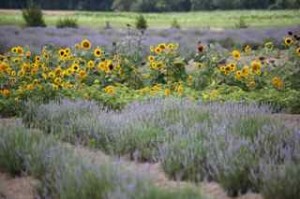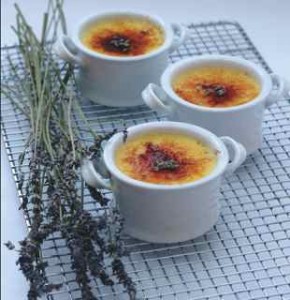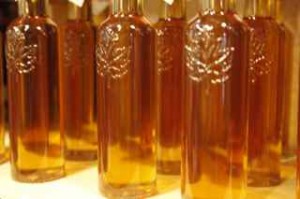 A former tobacco farmer, Robert Koprich now grows 17-acres of French Provencal lavender and English lavender on his 150-acre farm in Delhi in Norfolk County. From the beginning of July to mid August the field is a beautiful blanket of billowy purple. Robert planted a large section of sunflowers in the middle of the purple to give his farm that “Monet look” as he calls it. I say it’s simply beautiful.
A former tobacco farmer, Robert Koprich now grows 17-acres of French Provencal lavender and English lavender on his 150-acre farm in Delhi in Norfolk County. From the beginning of July to mid August the field is a beautiful blanket of billowy purple. Robert planted a large section of sunflowers in the middle of the purple to give his farm that “Monet look” as he calls it. I say it’s simply beautiful.
Like many other agricultural crops, there is good news and bad for this years harvest. The winter was very warm and the bushes didn’t get the blanket of snow they needed so there was some winter kill. The summer has been dry and windy resulting in only half the bloom of a traditional year, yet the colour is more intense. Like many farmers, Robert harvested early this year, which means he’s anticipating a second harvest from his crop. While this sounds like good news, the reality is that it will double his labour costs. Not good news for Roberts bottom line.
Lavender harvest takes place in the early morning hours before the sun evaporates the oils off the bushes. Robert removes about a foot off the top of the bushes that grow approximately 2-feet tall (English lavender) to 3-feet (Provencal Lavender). This year’s harvest is of super quality because the plants have an excess of oil, which means the dried lavender will have a much higher level of aromatics than in previous years – great news for lavender lovers.
Purple Daze (www.purpledazelavender.com) as Robert’s farm is now called, produces dried lavender buds, lavender honey, herbs d’provence, and lavender oil along with a variety of lavender bath products. There is an on-site retail store or you can find the Koprichs at the Simcoe Farmers’ Markets on Thursday, and the Port Dover and Brantford Farmers’ Market on Saturdays.
Lavender is a relatively new crop for Ontario. It loves dry, sandy, well drained soils, the same kind of conditions tobacco thrives on. So far there is approximately 100-acres of lavender beautifying Ontario’s agricultural landscape and it’s growing.
With the assistance of the University of Guelph, Ontario lavender growers are experimenting with the over 100 different varieties of lavenders in Ontario growing conditions. Currently, there are about 12 varieties that show promise.
Robert grows four of them; French Provencal, English, Melissa (white lavender, heavier in oil) and Purple Hidcote (super deep purple colour). An average lavender plant grows to 3-feet tall and English being the shorter variety at about 2-feet.
Second weekend in July Robert hosts the Purple Daze Festival that includes everything lavender, a community of artisans, yoga classes and belly dancing classes. “The colourful costumes of the bell dancers in the lavender field is just beautiful,” says Robert.
Purple Daze
2985 Rhineland Rd, Delhi
Retail store is open daily from 10 a.m. to 5 p.m.
Lavender Coffee Cake
Recipe courtesy of Niagara Cooks: from farm to table (Epulum Books $29.95)
2 1/4 cups (560 mL) all-purpose flour
1/2 cup (125 mL) lavender scented sugar
2 1/2 teaspoons (12.5 mL) baking powder
1/2 teaspoon (2.5 mL) salt
3 tablespoons (45 mL) unsalted butter, chilled and cut into small pieces
1 tablespoon (15 mL) fresh lavender flowers (or 1 teaspoon (5 mL) dried)
1/2 cup (125 mL) whole milk
1 farm fresh egg, lightly beaten
1/2 cup (125 mL) apricot jam
4 tablespoons (60 mL) dried apricots, chopped
1/2 cup (125 mL) hazelnuts, chopped
Cooking oil
1 1/2 teaspoon (7.5 mL) sugar
Preheat oven to 375F (190C). Combine flour, sugar, baking powder and salt in a bowl.
Cut in butter with a pastry blender until mixture resembles coarse meal. Stir in lavender flowers. Add milk and egg, stirring just until moist. Turn dough out onto a lightly floured surface. Knead 5 times. Roll into a 9 x 7-inch rectangle. Mix dried apricots and hazelnuts into preserves. Spread apricot preserve mixture over dough, leaving a 1/2-inch border. Beginning with long side, roll up jelly-roll fashion; pinch seam to seal (do not seal ends of roll). Form roll into a circle and cut roll into nine 1-inch slices. Twist each slice, cut sides up, in an 8-inch non stick round baking pan lightly coated with oil. Sprinkle the slices with sugar. Bake for 35 minutes or until golden brown. When ready to serve, drizzle with sugar glaze and sprinkle with dried lavender buds. Makes 1 ring.
Lavender Créme Brulée
Recipe courtesy of Niagara Cooks: from farm to table (Epulum Books $29.95)
4 cups (1 L) heavy cream
1 tablespoon (15 mL) dried lavender flowers
8 farm fresh egg yolks
1/2 cup (125 mL) sugar
4 tablespoons (45 mL) sugar
Preheat oven to 300F (150 mL). Butter 8 ramekins or custard cups and set them into a glass baking dish. In a large, heavy saucepan over medium heat, put cream and the lavender flowers; heat the cream until tiny bubbles appear around the edge of the saucepan. Remove from heat and allow lavender flowers to infuse with the cream for 30 minutes. Strain cream mixture through to remove lavender flowers. Reheat cream over low heat. In the meantime, whisk together the egg yolks and sugar until light and creamy. Slowly add the hot cream to the egg mixture, whisking continuously. Divide custard among the ramekins. Pour hot water into the baking pan to come half-way up the sides of the ramekins. Bake 1 hour or until set around the edges but still loose in the centre. Remove from oven and leave in the water bath until cooled. Remove cups from water bath and refrigerate at least 2 hours.
When ready to serve, sprinkle sugar over each custard. For best results, use a small hand-held torch and hold the torch 4 to 5 inches from the sugar, maintaining a slow and even motion. Stop torching just before the desired degree of doneness is reached, as the sugar will continue to cook for a few seconds after flame has been removed. If you don’t have a torch, place custards 6 inches below the broiler for 4 to 6 minutes or until sugar bubbles and turns golden brown. Refrigerate créme brulée at least 10 minutes before serving.







